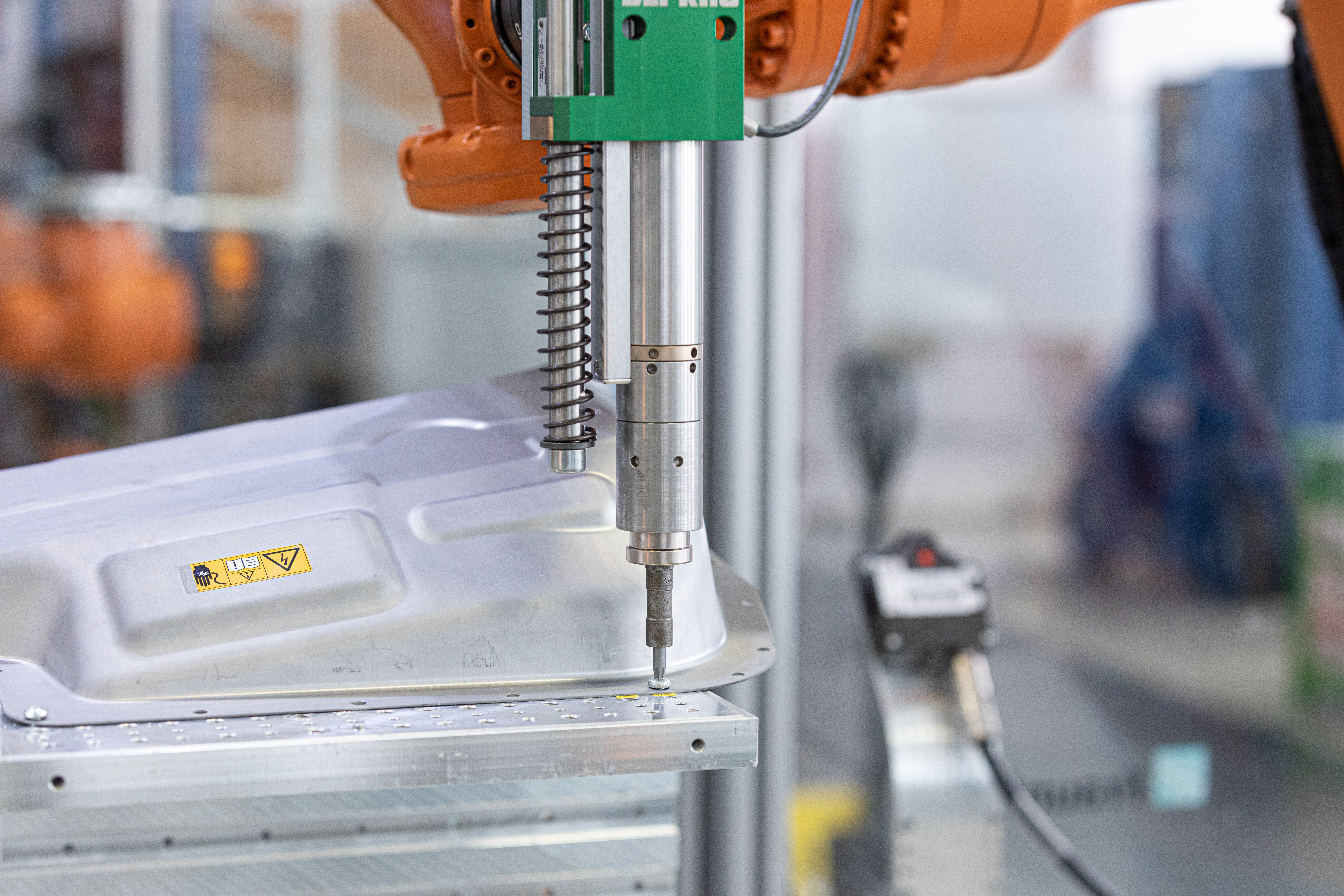
The Fraunhofer IPA is developing a universal, “swiss army knife-style” solution for dismantling spent batteries of all makes, models and denominations.
© Rainer Bez, Fraunhofer IPA
By 2030, there will be around 50 million electric cars on the roads worldwide – and that presents a massive recycling headache. Electric car batteries only last ten years and are expensive and hazardous to recycle. Furthermore, they are packed with valuable raw materials such as nickel, cobalt, manganese and lithium that can and should be reused.
The Fraunhofer Institute for Manufacturing Engineering and Automation (IPA) is already onto it: The Centre for Digitalised Battery Cell Production is half-way through a project called DeMoBat ("Industrial Dismantling of Batteries") to develop a universal, “swiss army knife-style” solution for dismantling spent batteries of all makes, models and denominations.
First, the battery must be de-housed. The robot has to be trained to decide if it can do this with screws or whether it needs to reach for the milling machine. "It could, of course, mill right away," says Lorenz Halt, a researcher from the IPA’s Robotics and Assistance Systems department in a press release. "But that's not the optimal strategy because it creates metal chips that could lead to a short circuit and ultimately a fire." And if a fire does break out, a slide automatically clears all parts lying on the work table into an extinguishing bath.
The robot is equipped with numerous tools for breaking apart and sorting components including wires, cables, screws, battery cells, electronic components and brackets. It’s toolbox includes ingenious mini jacks for separating individual cells that have been glued together.
DeMoBat will run until 2023 but the first robo-recycler could be ready for presentation before the end of the year. The team already have other ambitions for their robot: "In the future, we would also like to develop solutions that make it possible to process the recovered and still intact components of a battery for a further life cycle and reassemble them into a new system," says project manager Max Weeber.


